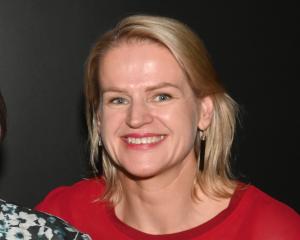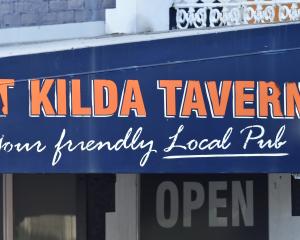
Last week, Economic Development Minister Steven Joyce climbed aboard an excavator to shift earth at the site of the new dairy shed.
DairyNZ and AgResearch are the principal shareholders in the hub, investing $5million each, while local farmers and businesses have contributed a further $1.25million through the Southern Dairy Development Trust.
The hub will allow farmer-led and local issues to be researched on southern soils, in southern conditions. Hub chairman Maurice Hardie said dairying was a significant industry in Southland and Otago, with milk production in the current season expected to be worth $1.9billion gross, based on the forecast $6 milk price.
"The $6 kg price is only a little above the break-even milk price for the region and much of the earnings will, in fact, be spent on running the farm, with local agri-businesses, including lending institutions, benefiting from farmer expenditure.
"With dairying playing such a major role in the region’s economy, it is essential that dairy challenges and opportunities be addressed through local research and demonstration," Mr Hardie said.
It was four years ago when local farmers, with the support of DairyNZ, brought together like-minded people to, firstly, build a business case, then secure investment, followed by buying suitable land. There had been a few challenges along the way but those behind the hub were determined to make it work, he said.
DairyNZ’s strategy and investment leader, Dr Bruce Thorrold, said research would compare and test new theories and innovation, including environmental management, wintering options and effluent.
Farm systems would also be compared and current programmes such as the Forage Value Index would be tested and validated in local conditions to produce local data.
Dr Thorrold chairs the hub’s recently established research advisory committee, which also includes AgResearch scientists and two farmer representatives.
Mr Hardie said as projects were successful, it would give "an awful lot of information to farmers to take it on board without having to do it by trial and error themselves".
"It’s about shortening the lessons."
The 349ha farm would be self-contained for wintering and young stock, allowing for research to be carried out across the whole system.
It was designed to run up to four 200-cow herds, with one used as the control to demonstrate top commercial performance, and 640 cows were to be milked in the coming 2017-18 season.
Conversion work under way included site preparation for the dairy shed, research office space, storage facilities, barns and staff housing, farm roads and races, fencing and the effluent system.
An agribusiness centre was also planned, intended to provide offices and facilities for training, education and extension activities.
Southland has 990 dairy herds and Otago 438, representing 12% of New Zealand’s dairy herds.
In Southland, 575,384 cows were milked and 262,293 in Otago, an increase of 84% over the past decade.
Annual milk solids production of 324million kg in Otago-Southland now accounted for 17% of national milk production, making it the third-largest dairying region behind Waikato and Canterbury.












